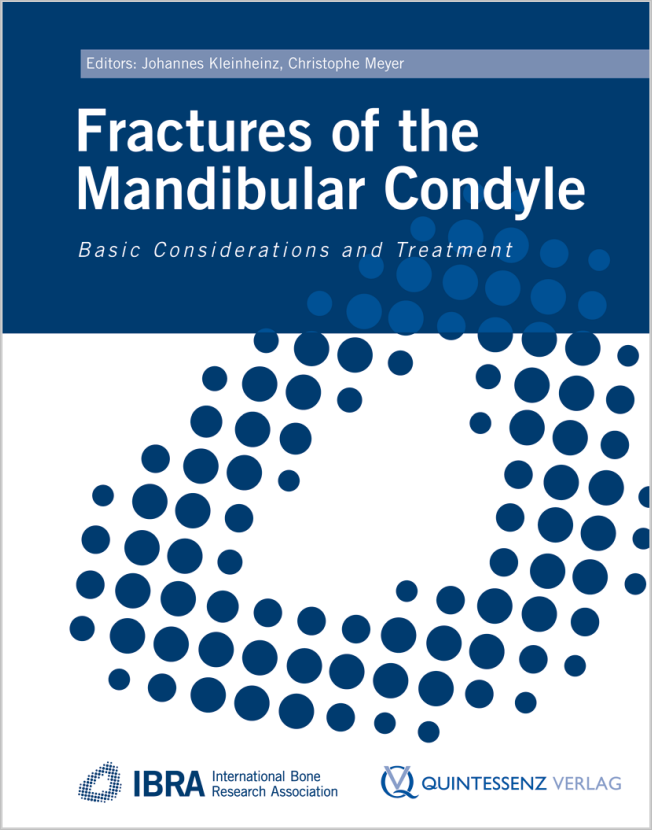International Poster Journal of Dentistry and Oral Medicine, 2/2025
Poster 2693, Language: English, GermanDaume, Linda / Jaber, Mona / Oelerich, Ole / Kleinheinz, JohannesOsteogenesis imperfecta (OI) is a rare genetic disorder characterized by a defect in type I collagen that leads to bone fragility and connective tissue disintegration. The orofacial manifestations of OI include dentinogenesis imperfecta (DI), tooth and jaw malocclusion, and dental anomalies.This case report shows a four-year-old female patient with OI who presented with brown discolouration typical of DI on all deciduous teeth on oral examination. The teeth were already severely abraded and the bite height was reduced. The patient was symptom-free and practiced optimised oral hygiene. Patients with these genetic structural anomalies require lifelong, close, interdisciplinary dental care to maintain the results of treatment.
Keywords: osteogenesis imperfecta, dentinogenesis imperfecta, rare genetic disorders
International Poster Journal of Dentistry and Oral Medicine, 2/2025
Poster 2694, Language: English, GermanDaume, Linda / Kleinheinz, JohannesA patient with ectodermal dysplasia (ED) presented with a total of 20 congenital missing teeth, including wisdom teeth. An ED was confirmed by molecular genetic testing. An implant-supported denture for fixed, masticatory rehabilitation was applied for and approved by the health insurance company as an exceptional indication. The treatment was carried out after completion of orthodontic treatment at the age of 17. This means that patients with multiple missing teeth can receive an implant-prosthetic restoration before growth is complete. Patients demonstrably gain in quality of life.
Keywords: ectodermal dysplasia, implants, multiple agenesis
International Poster Journal of Dentistry and Oral Medicine, 2/2025
Poster 2695, Language: English, GermanDaume, Linda / Poggenpohl, Laura / Joanning, Theresa / Kleinheinz, JohannesLichen planus is a common chronic inflammatory disease that affects the skin and mucous membranes (especially the oral and genital mucosa) and whose aetiology is unknown. Initially, topical salves, gels or mouthwashes containing corticosteroids are used for treatment. For localized, chronic ulcerative oral lichen planus lesions (OLP), an intralesional application of corticosteroids can be used, which can sometimes be repeated two to three times at intervals of just under a month. This case report shows that intralesional injection of triamcinolone is an effective treatment for refractory cases of OLP. Long-term and regular monitoring is required.
Keywords: oral lichen planus, ulcerativ lesions
International Poster Journal of Dentistry and Oral Medicine, 2/2025
Poster 2691, Language: English, GermanJaber, Mona / Kanemeier, Moritz / Stamm, Thomas / Schmid, Jonas Q. / Kleinheinz, JohannesThe aim of the present study was to introduce and validate an open workflow for the cephalometric evaluation of 2D cephalometric lateral radiographs (FRS) generated from digital volume tomography (CBCT). This study was performed on four patients with FRS and CBCT with sufficiently large FOV available at the same time. Using a Phyton script written for this project, 2D FRS images were reconstructed from the CBCTs. Each image was cephalometrically analysed by 6 raters. The agreement of the cephalometric values from both methods was checked using Bland-Altman analysis. Using an open workflow, it was possible in all cases to generate a 2D reconstruction that was sufficient for cephalometric evaluation. The cephalometric analyses performed with this workflow led to clinically comparable results. The presented open workflow could be validated on the present patient collective.
Keywords: open workflow, cephalometric analyses, reconstruction of cephalometric lateral radiography from CBCT, Bland-Altman analyses
International Poster Journal of Dentistry and Oral Medicine, 1/2025
Poster 2669, Language: English, GermanKöckerling, Nils / Oelerich, Ole / Daume, Linda / Kleinheinz, JohannesMarcus Gunn syndrome, or mandibulopalpebral synkinesis, is a congenital movement of the upper eyelid when the mouth is opened. The cause is a paradoxical ipsilateral innervation between the eyelid retractor and the lateral pterygoid muscle. Clinically, there is ptosis of the affected eyelid, which disappears when the mouth is opened. The inverse Marcus-Gunn phenomenon describes an ipsilateral closure of the eyelid when the lateral pterygoid muscle contracts. The combination of both phenomena is also known as ‘See-Saw’ Marcus Gunn syndrome. This is a congenital condition that leads to lifting of the upper eyelid on one side and lowering of the upper eyelid on the opposite side when the mouth is opened. This condition is considered an extreme rarity. In this case report, we show a twenty-year-old woman who has had the condition from birth. At rest, there is incomplete ptosis of the right eye. When the mouth is opened, the right eyelid lifts involuntarily and the left upper eyelid lowers almost completely. In addition, she shows a bilateral involuntary pupil movement to the left caudal side. A causal therapy is not yet known, genetic counselling is recommended. Therapeutic approaches relate to independent conscious training of the dysinervated eyelid in front of the mirror; in severe cases, surgical correction may be considered.
Keywords: MGS, rare phenomenon, mandibulopalpebral synkinesis
International Poster Journal of Dentistry and Oral Medicine, 1/2025
Poster 2683, Language: English, GermanNafz, Ludwig / Trento, Guilherme / Lisson, Jacqueline / Jung, Susanne / Kleinheinz, JohannesMature teratoma in newborns is a very rare but highly aesthetically impairing, functionally limiting and potentially life-threatening entity in the craniofacial region which can be classified into grades 0-3 according to Gonzalez-Crussi. Due to the rarity and complexity of the clinical picture, as well as balancing necessary radicality and potential mutilation, we present a multidisciplinary management concept. The case series comprises three patients in whom an extra- and intraoral neoplasia was detected during the neonatal period, necessitating intensive care and surgical reduction of the mass. Preoperatively, in addition to obtaining samples and histologically confirming the diagnosis, an MR examination was performed in all cases to plan the surgical procedure. In all three cases a mature teratoma, G0 according to Gonzalez-Crussi, was detected. Repeated discussions were held at the interdisciplinary tumour conference during treatment. The resections were carried out in accordance with the treatment protocols of the MAKEI V study centre. After resection, in all three cases an immediate improvement in function and aesthetic correction was achieved, enabling oral feeding and regular development of the child. No mutilating surgery was planned, and therefore a complete resection was not attempted. All patients are undergoing multidisciplinary, long time follow-up care according to the individual risk.
Keywords: tumour, teratoma, paediatric, maxillofacial
International Poster Journal of Dentistry and Oral Medicine, 1/2025
Poster 2670, Language: English, GermanNafz, Ludwig / Oelerich, Ole / Jaber, Mona / Kleinheinz, JohannesPeripheral extraosseous ameloblastoma is the rarest subtype of ameloblastoma, accounting for 1-2% of cases. We report a case in which a peripheral ameloblastoma of the acanthomatous type occurred at the same site of a previously removed central ameloblastoma. The patient had a central ameloblastoma of the right mandibular angle removed 15 years ago. The patient underwent clinical and radiological follow-up, initially every six months and then every year, which ended eight years ago. On the advice of her family dentist, the patient presented again with an exophytic mucosal change in the area of the former resection site. A sample was taken and a histological examination was performed, which revealed a peripheral ameloblastoma of the acanthomatous type; a microscopically complete removal could not be assumed due to marginal cell nests. Due to the rarity of the findings, there is no clear consensus regarding the necessary radicality of the removal. In this case, a subsequent resection was dispensed with in favour of close clinical and radiological follow-up; a six-monthly follow-up interval was again specified.
Keywords: ameloblastoma, case report, acanthomatous type
International Poster Journal of Dentistry and Oral Medicine, 1/2025
Poster 2685, Language: English, GermanNafz, Ludwig / Daume, Linda / van der Bijl, Nils / Kleinheinz, JohannesThe cutaneous horn is a clinical finding rooted in a variety of different benign and malignant causes. Sampling with subsequent histologic examination is the diagnostic gold standard. Depending on the causing pathology, different therapies are necessary. We report a case in which a patient presented to our outpatient clinic with two cutaneous horns of the lower lip. A biopsy had already been performed in another clinic five years ago, in which a not fully excised, well-differentiated squamous cell carcinoma (G1), was found. The patient refused further surgical treatment recommendations at the time. Due to the size-progressive and functionally limiting findings, the patient presented to our clinic. After removal of the lesions, a histological examination was performed. Apart from verrucous hyperplastic squamous epithelium, no evidence of malignancy was histologically found. As there were no histologically visible signs of malignancy, the patient was discharged in an aesthetically and functionally acceptable state into a follow-up program with clinical check-ups every six months in order to detect and remove any recurrences at an early stage.
Keywords: cornu cutaneum, cateneous horn, squamous cell carcinoma, lower lip
International Poster Journal of Dentistry and Oral Medicine, 1/2025
Poster 2686, Language: English, GermanJaber, Mona / Trento, Guilherme / Daume, Linda / Hanisch, Marcel / Kleinheinz, JohannesPrimary failure of eruption is a genetic partial eruption disorder that leads to an open posterior bite. The clinical severity and manifestation of primary failure of eruption are variable. The correct diagnosis of this eruptive anomaly plays an essential role in treatment planning, which can be prosthetic, orthodontic, surgical or multidisciplinary. The aim of this study was to determine the extent to which adequate treatment can be derived from the radiologic presentation of the PFE in the orthopantomogram. Preoperative panthomogram images were evaluated in 42 patients with confirmed PFE. The basis for treatment decisions was defined as follows: Evaluation of the affected teeth, evaluation of the bone, occlusal lines in the posterior region. Treatment can be standardised on the basis of orthopantomogram images in patients with PFE. We were able to derive the following treatment options from the orthopantomogram images: If the teeth are slightly below the occlusal plane, prosthetic treatment is indicated; in the case of a negative occlusal line in the mandible and also in the maxilla, extraction / augmentation / implantation / prosthetics should be selected as a treatment option; if the occlusal plane is displaced caudally in the mandible and cranially in the maxilla, a bimaxillary repositioning osteotomy would be indicated; if the occlusal plane is displaced caudally in the mandible and cranially in the maxilla, distraction or a segmental osteotomy with fixation would be indicated. The evaluation of orthopantomogram images of confirmed primary failure of eruption patients has shown that criteria can be defined that lead to standardisation and simplification of treatment.
Keywords: orthopantomogram, primary failure of eruption, PFE, treatment decisions, treatment standardised
International Poster Journal of Dentistry and Oral Medicine, 1/2025
Poster 2688, Language: English, GermanWerner, Julian / Köckerling, Nils / Kleinheinz, Johannes / Daume, LindaAcute myeloid leukaemia (AML) is an acute disease in which B-symptoms such as weakness, fever, and night sweats usually appear early in the case history. However, subtypes of AML can present with specific symptoms, for example in the form of gingival hyperplasia. Sampling (PE) with histological examination is considered the gold standard of diagnosis. We report a case in which a patient with gingival hyperplasia in region 17-13 presented in September 2023. The PE performed revealed the presence of a chloroma (syn. myeloblastoma or granulocytic sarcoma), which is the extramedullary manifestation of AML or an AML-related syndrome. The patient was then referred to the oncology day clinic. After further diagnostics, AML with an NPM1 mutation was detected and the patient was transferred to oncology treatment. A complete inspection and palpation of the oral cavity is essential for the early detection of (malignant) changes. In addition, systemic diseases often show oral manifestations as an initial or accompanying symptom. Here, the dentist can play a decisive role in quickly establishing the diagnosis. If lesions show no tendency to heal within two weeks despite adequate treatment, the previously made (suspected) diagnosis and the cytological or histological findings must be questioned and repeated if necessary.
Keywords: acute myeloid leukaemia, AML, oral manifestation




